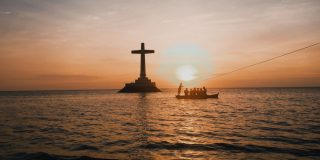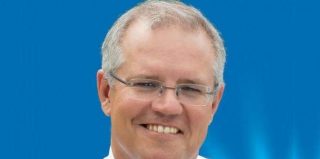The world faces a refugee crisis. 20 million people are refugees and another 2 million are seeking asylum. There are three possible solutions for those who are refugees: that they returned home when it becomes safe to do so; that they settle down and build a new life in the country to which they first fled; that they resettle in a third country such as Australia. At present less than 2% are able to return home each year, less than 2% are able to settle down in the country to which they have fled, and less than 1% are accepted for resettlement in third countries such as Australia. This leaves 95% of the world refugees living without any certainty about their future and usually in extremely difficult second circumstances.
The policy challenge centres on three issues.
How many refugees will Australia settle?
We currently accept 13,750 people pa under our humanitarian program, the bulk of whom are refugees. How many should we accept? If we based our “fair share” on our wealth, as a nation with 2.34% of global GDP we would accept 2.34% of the worlds asylum seekers and refugees, which would be a little over 500,000. This does not mean we would accept 500,000 per annum, but that of the existing 22 million people in need of refuge we would take 500,000, presumably staggered over a number of years.
The Coalition has committed to increasing our humanitarian intake to 18,750 by 2018/19, the ALP to increasing the humanitarian intake to 27,000 by 2025, and the Greens to an increase to 50,000 per annum.
How will we handle the movement of refugees in our region?
In the absence of clear pathways by which they might find refuge and the opportunity to build a new life many refugees resort to “irregular migration pathways”. These are frequently dangerous. It is incumbent upon the international community to help refugees find safe pathways to refuge. The Coalition is committed to accepting refugees from overseas but has announced no plans to create pathways for refugees in our region. The ALP and the Greens are proposing substantial efforts to create a regional framework by which refugees to our region are processed quickly in the countries to which they have fled (such as Malaysia and Indonesia), that once found to be refugees they are offered settlement opportunities in countries in our region, and that they be treated with decency and humanity while they are waiting for settlement. Both the ALP and the Greens propose that a large number of the increased places they will make available will go to refugees in our region.
What will we do about offshore detention?
It is the policy of the government that any refugee or asylum seeker who arrives by irregular means, that is travelling to Australia without a visa of some kind, will be detained indefinitely in an offshore detention centre and will never be accepted for settlement in Australia. Conditions in the detention centres are harsh and the absence of any indication of when a durable solution may be found creates despair among those detained. The Coalition is proposing no change to its current policy. The ALP will continue offshore detention and maintain the principle that no refugee arriving by irregular means will be settled in Australia, but differs from the Coalition in arguing that detention must not be indefinite, requiring urgent efforts to find third countries to resettle those in offshore detention who are found to be refugees. The ALP also proposes an independent body to oversee conditions in the centres. The Greens are proposing to shut the centres down, relying on their increased humanitarian program and a regional framework to ensure people are not forced to make dangerous journeys to Australia.
| COALITION | ALP | GREENS | |
| Humanitarian Intake Australia currently receives 13,750 refugees or people in refugee like situations per year | Increase from 13,700 to 18,750 by 2018/19 | Increase to 27,000 by 2025 | Increase to 50,000, including 10,000 skilled refugees |
| Offshore Detention Centres Australia currently sends all unauthorised maritime arrivals to detention on Nauru and will never admit them to Australia | Continue current policy. | Continue offshore detention but find resettlement in other countries for those found to be refugees. Establish an independent monitor of conditions in offshore centres. Release all children from offshore detention | Shut offshore detention centres, saving $2.9 billion over forward estimates. Immediately release all children and their families |
| Boat turnbacks The Australian navy intercepts boats seeking to transport asylum seekers to Australia, and where it is safe to do so, sends them back to where they originated from | Continue current policy | Continue current policy | Discontinue boat turnbacks |
| Regional approach A regional approach would see countries of our region working together to process and settle refugees | No stated policy | Committed to developing a regional approach. The bulk of the 27,000 refugees received under the humanitarian program to be refugees from our region. | Devote $500 million over four years to enable people to be processed where they are (eg Indonesia & Malaysia) and be treated decently while they wait |
| Asylum Seekers currently in Australia Around 30,000 asylum seekers who arrived in Australia prior to 2013 are on bridging visas. Those found to be refugees will be eligible only for a temporary protection visa, which denies them the opportunity for permanent residency and does not allow their family to be brought to Australia. | Continue current policy | Abolish TPVs and grant refugees permanent residency | Abolish TPVs and grant refugees permanent residency |
| Other | Increase support to UNHCR to $450 million over three years | Establish a royal commission into children in detention. Abolish Australian Border Force and return functions to the Dept of Immigration |







How do the parties compare? Asylum seeker and refugee policy | https://t.co/6loqoJ5z3s https://t.co/mffvi5WheG
RT @scottjhiggins: How do the parties compare? Asylum seeker and refugee policy | https://t.co/6loqoJ5z3s https://t.co/mffvi5WheG
“DISHING UP SOME JUSTICE” – COMMUNITY CARE DINNER
It’s not too late to register this weekend! Celebrate the… https://t.co/T2R9XzhEXq
https://t.co/WILShX7PcB